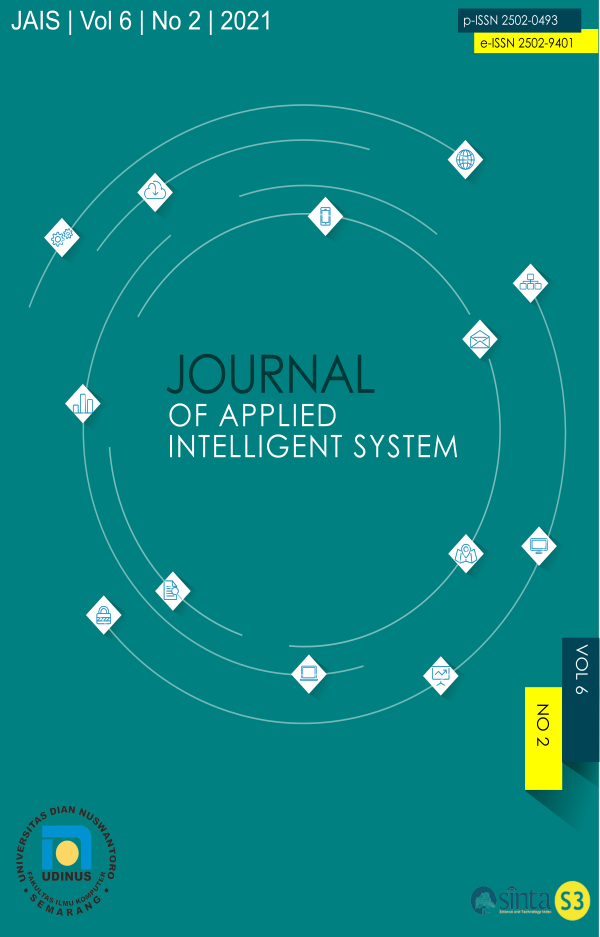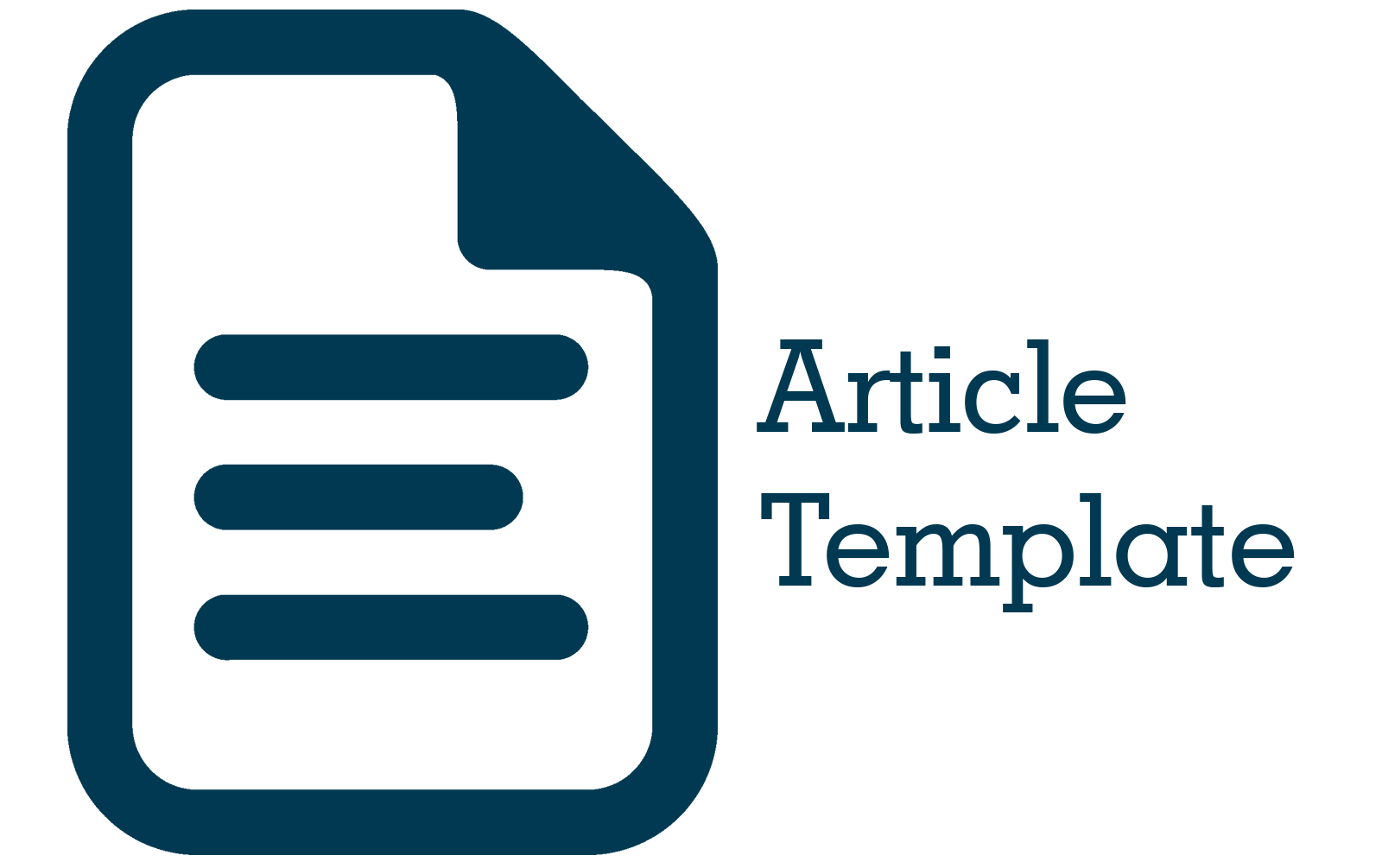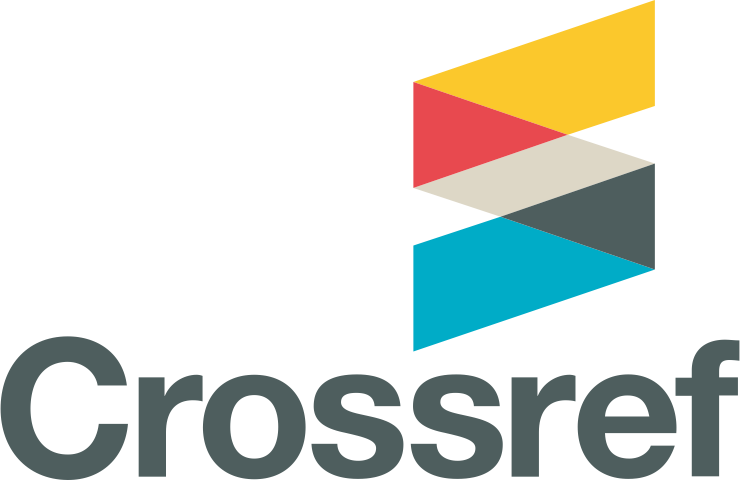CNN for Image Identification of Hiragana Based on Pattern Recognition using CNN
DOI:
https://doi.org/10.33633/jais.v6i2.4586Abstract
Hiragana is one of the letters in Japanese. In this study, CNN (Convolutional Neural Network) method used as identication method, while he preprocessing used thresholding. Then carry out the normalization stage and the filtering stage to remove noise in the image. At the training stage use maxpooling and danse methods as a liaison in the training process, wherea in testing stage using the Adam Optimizer method. Here, we use 1000 images from 50 hiragana characters with a ratio of 950: 50, 950 as training data and 50 data as testing data. Our experiment yield accuracy in 95%.References
C. L. Liu, “Normalization-cooperated gradient feature extraction for handwritten character recognition,” IEEE Trans. Pattern Anal. Mach. Intell., vol. 29, no. 8, pp. 1465–1469, 2007.
Y. Wang, Z. Lian, Y. Tang, and J. Xiao, “Boosting scene character recognition by learning canonical forms of glyphs,” Int. J. Doc. Anal. Recognit., vol. 22, no. 3, pp. 209–219, 2019.
Q. Miao, R. Liu, P. Zhao, Y. Li, and E. Sun, “A Semi-supervised Image Classification Model based on Improved Ensemble Projection Algorithm,” IEEE Access, vol. 4, no. c, pp. 1–1, 2017.
S. D. Budiwati, J. Haryatno, and E. M. Dharma, “Japanese character (Kana) pattern recognition application using neural network,” in Proceedings of the 2011 International Conference on Electrical Engineering and Informatics, ICEEI 2011, 2011, no. July.
M. Karki, Q. Liu, R. DiBiano, S. Basu, and S. Mukhopadhyay, “Pixel-level reconstruction and classification for noisy handwritten bangla characters,” Proc. Int. Conf. Front. Handwrit. Recognition, ICFHR, vol. 2018-August, pp. 511–516, 2018.
F. Chang, C. C. Lin, and C. J. Chen, “Applying a hybrid method to handwritten character recognition,” in Proceedings - International Conference on Pattern Recognition, 2004, vol. 2, no. 1, pp. 529–532.
M. Nguyen and N. A. V. B, “SVMs with Deep Learning and Random,” in Springer, vol. 2, Springer International Publishing, 2019, pp. 157–172.
S. Das and S. Banerjee, “An Algorithm for Japanese Character Recognition,” Int. J. Image, Graph. Signal Process., vol. 7, no. 1, pp. 9–15, 2014.
H. A. Morsy, “Developing a New CCN Technique for Arabic Handwritten Digits Recognition,” Int. J. Recent Technol. Eng., vol. 9, no. 3, pp. 520–524, 2020.
Charlie Tsai, “Recognizing Handwritten Japanese Characters Using Deep Convolutional Neural Networks,” 2016.
H. Shah, R. Rajasekaran, and J. Masih, “A Comparative Study of Classification Algorithms with Varying Training Dataset Sizes on Cursive Hiragana Characters,” J. Xi’an Univ. Archit. Technol., vol. XII, no. Viii, pp. 1388–1396.
Downloads
Published
Issue
Section
License
Copyright (c) 2021 Renol Burjulius, Chaerul Umam, Andi Danang Krismawan, Rabei Raad Ali

This work is licensed under a Creative Commons Attribution-NonCommercial 4.0 International License.
- Authors retain copyright and grant the journal right of first publication with the work simultaneously licensed under a Creative Commons Attribution License that allows others to share the work with an acknowledgment of the work's authorship and initial publication in this journal.
- Authors are able to enter into separate, additional contractual arrangements for the non-exclusive distribution of the journal's published version of the work (e.g., post it to an institutional repository or publish it in a book), with an acknowledgment of its initial publication in this journal.
- Authors are permitted and encouraged to post their work online (e.g., in institutional repositories or on their website) prior to and during the submission process, as it can lead to productive exchanges, as well as earlier and greater citation of published work (See The Effect of Open Access).









